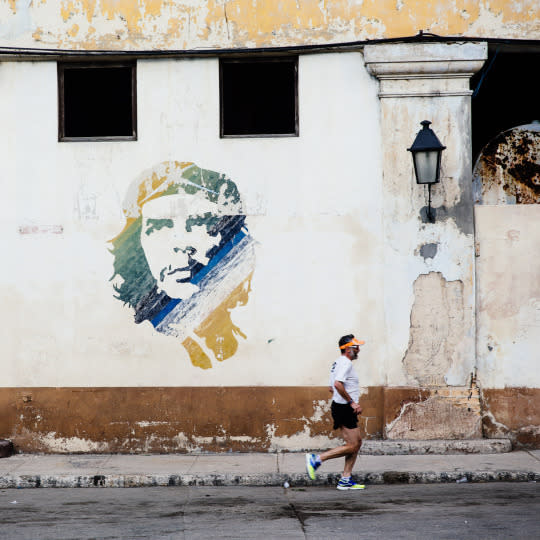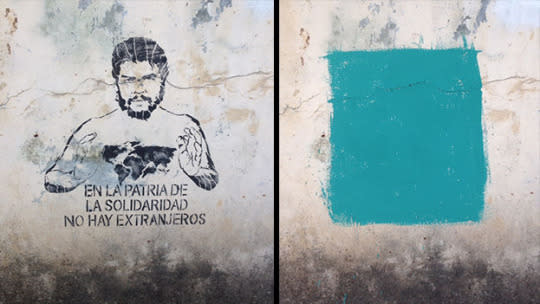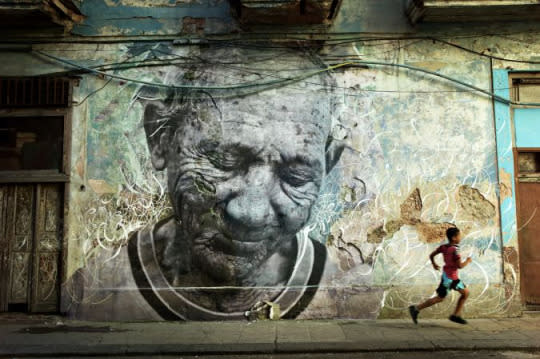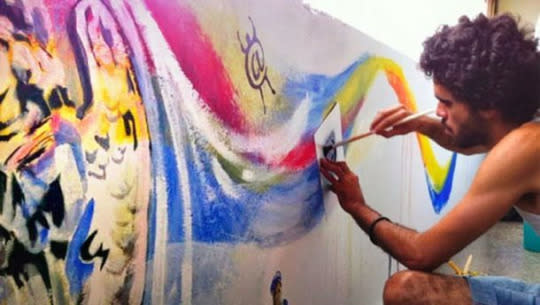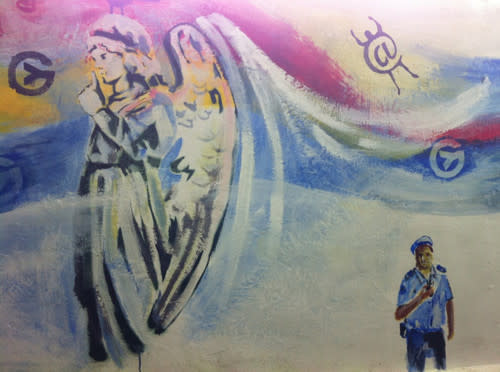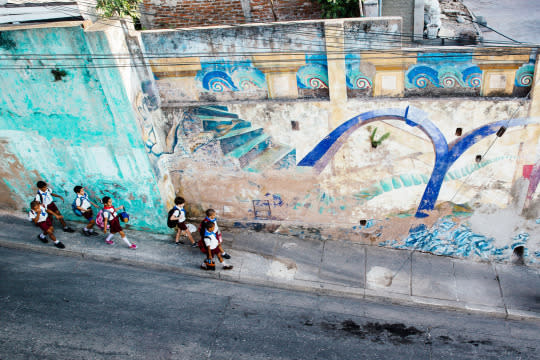The Incredible Street Artists Who Are Transforming Cuba
When you walk down the streets of Havana, the very walls and sides of the buildings themselves show how the country is inching toward a freer, very different world.
The tool to help make this happen? Spray paint.
The idea of street art usually conjures up images of graffiti tags, impromptu murals, or works by trendy guerrilla artists like Banksy. But in Cuba, a country known for government control of everything from the airwaves to shampoo, daring to leave your mark publicly is an act of bravery.
Yet it’s happening.
I spent a month in Cuba earlier this year, marveling at much of the incredible examples of street art, like the paint-splashed Afro-Cubano art alley of Callejón de Hamel and Havana’s answer to New York City’s PS1, the Fábrica de Arte Cubano. The art in those places is fantastic, memorable, and gripping, brightening the already colorful streets of Havana. But I also realized that if I happened to witness unlicensed street art, that would truly be historic. Government censors cover it fast.
“Unlicensed graffiti has only really emerged on the streets in the past decade or so, and increased exponentially in the last few years,” says journalist Tyler Wetherall, who covers Cuba extensively in her blog Our Girl in Havana. “International street artists were invited to exhibit at Havana’s 11th Biennial Art Festival, and that became a turning point, I think, for many artists who wanted to explore the walls as a canvas for their creative or political message. It also brought to the forefront the complexities of the state’s stance on street art.”
This is a controversial point, but street art — meaningful street art — can’t exist without freedom of expression. This is especially important in a place where citizens have few other outlets: Internet access is unreliable and expensive, the press is constrained, and even phone calls are difficult to make.
Much of Havana’s beautiful street art is government-sanctioned, of course, particularly the potent political murals of national hero Ernesto “Che” Guevara and leaders Fidel and Raúl Castro that seem to be around every corner.
But Wetherall and dissident Cuban writer Yoani Sanchez point out that unsanctioned street art is something different.
“Some young people dare to leave their stamp … on a city already marked by excessive official propaganda. It is a language that runs parallel to the rhetoric of power, a kind of scream in the form of colorful strokes,” Sanchez writes on her blog Generation Y (read it here in English).
One street artist in particular has made waves internationally for his work, which criticizes the current administration: Danilo Maldonado Machado, known by his tag and moniker “El Sexto” (The Sixth), a Cuban graffiti artist and human rights activist. According to Sanchez’s reporting, Cuban officials told Machado he’d have a promising career … if he would put his talents to a different use. But Machado views artistic expression as something spontaneous, rebellious, and free of bureaucracy. He’s a street-art purist.
We spoke to him about the challenges of doing the work he loves.
“Art can move your insides and even remove the blinders from situations; art exists to open people’s eyes and can often educate,” Machado told Yahoo Makers, speaking from Miami via a translator. The artist has recently decamped to the U.S. to recover from a 10-month stint in prison that ended on Oct. 20, for attempting to release two pigs painted with the names of Raúl and Fidel Castro in a public park as an art piece.
He was detained but never charged, a “prisoner of conscience,” as international human rights advocates called it. "Peacefully expressing an opinion is not a crime,“ Erika Guevara-Rosas, Americas director at Amnesty International, said of the case in a statement.
“The hardest thing about being an artist in Cuba is to have to interact with people who … don’t respect the fundamental dignity of the individual. The limitations upon me in comparison with those in democratic places is that my art can be considered a crime and be the subject of persecution,” Machado told me. “But if I was able to achieve things with my art such as saving my own life or having people from 1,000 miles away be influenced by that art, well, it means that we can use nonviolence to [change the government].”
In April, Machado received the Vaclav Havel International Prize for Creative Dissent from the New York-based Human Rights Foundation. “I’m working now on establishing the El Sexto Foundation, which will receive as its first donation the funds awarded by the Vaclav Havel Prize. I was honored to join artists such as Ai Weiwei and Pussy Riot, as well as inspiring, historic figures such as Aung San Suu Kyi and Ali Ferzat,” he told me. “The El Sexto Foundation will be transparent, and will endeavor to be creative and to support independent art in Cuba.”
Here’s hoping that art in Cuba does become more independent and democratic. The world, now more connected with Cuba than ever, will be watching.
Also on Yahoo Makers:
Street Cleaner Wins Hilarious, Year-Long Battle with Graffiti Artist
Pass Grandma the Spray Paint: Street Artists Team with the Elderly to Revitalize Old Neighborhoods
These 8 Street Artists Rule Instagram (Not Just Banksy)
Let Yahoo Makers inspire you every day! Join us on Facebook, Twitter, Instagram, Tumblr, and Pinterest.
